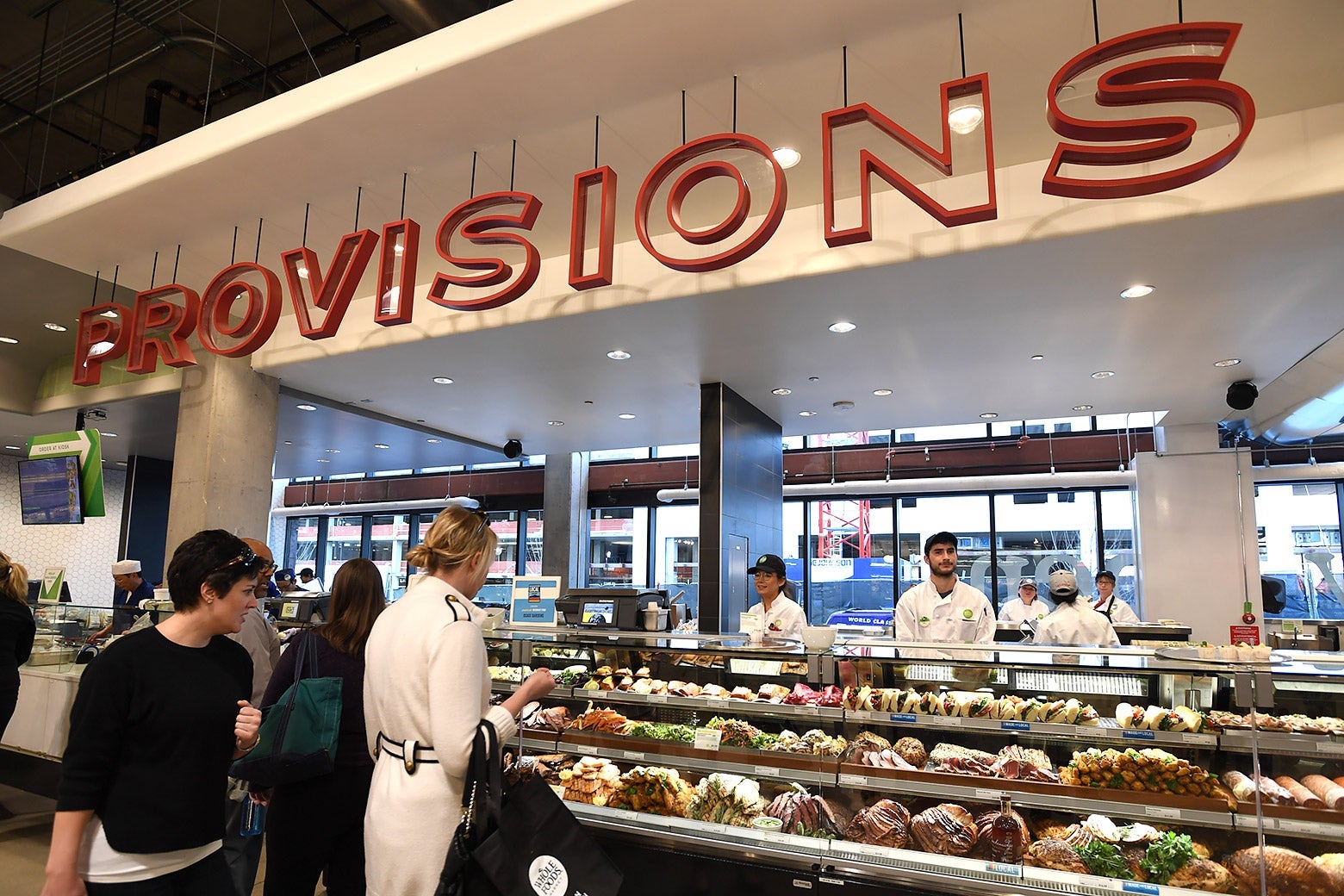Inflation is hitting poor families harder than wealthy families, or so Christopher Wimer, Sophie Collyer, and Xavier Jaravel argue in a Groundwork Collaborative report published Tuesday that’s getting a lot of media attention. According to the trio’s research, since 2004, inflation has been about 0.44 percentage points higher per year for households in the bottom 20 percent of income than families in the top 20 percent of income. Wealthy people and poor people don’t spend their money on the same items—a poor shopper might buy vegetable oil, while a wealthy shopper picks extra virgin olive oil—so the prices aren’t necessarily changing at the same rate. According to their theory, companies have put more innovation into bringing down prices for wealthy families than for poor families.
The problem is that inflation is insanely hard to measure in general, let alone for specific subsets of people. Their report assumes we accurately measure inflation for the wealthiest families and that we underestimate it for everybody else; if that’s true, we may be undercounting the number of Americans in poverty by about 3.2 million people. It’s also strange that Jaravel, his co-authors, and the media are focusing on whether the price of craft IPAs is rising more slowly than the price of Keystone Light when poor Americans spend the majority of their money on housing and health care, not beer. A 2017 Morgan Stanley report found that, as of 2016, the lowest-income consumers spent more than 57 percent of their after-tax income on rent and health care; by comparison, consumers in the top 20 percent spent less than 10 percent of their after-tax income on the same two categories. Because housing and health care are so important to the budgets of poor families, it doesn’t make that much sense to try to measure “inflation inequality” by looking at the bar code data—which only covers packaged goods, mostly food—that the Nielsen Company provides. But that’s the primary approach Jaravel used in the Quarterly Journal of Economics paper upon which the Groundwork Collaborative report is based.
In the same paper, Jaravel used a second approach, based on survey data that covers a full suite of spending categories found in the consumer price index, including housing, utilities, and health care. When he included all categories, instead of just bar code items, the extent of inflation inequality measured goes down, rather than up. That’s surprising, in part, because according to the Morgan Stanley report, the percent of income that poor families spend on housing and health care has been rising considerably since the 1990s. When Jaravel considered 256 microcategories of purchases (such as fresh milk), the poor experienced an extra 0.35 percentage points of inflation per year compared with the rich. But when he zoomed out to 22 broad categories of purchases (such as groceries), that dropped to 0.07 percentage points—80 percent of the measured inflation inequality disappeared completely. So according to his research, this isn’t really a story about how the rent is too damn high, but rather about the relative price changes in organic arugula compared with conventional iceberg lettuce. To buy the argument Jaravel is making, you have to accept his assertion he suggested in an email, that “much of inflation inequality arises across the quality ladder within detailed product categories (for example high-end vs. entry-level wine).”
These issues sit on top of a much broader debate among economists about how inflation ought to be measured in general. Economists have a hard time agreeing about the overall inflation rate, let alone how inflation varies for subsets of consumers. And Americans buy radically different things today than we did 20 years ago. Even if you don’t care that much about gadgets, it’s still meaningful that cars today break down less and that LED lightbulbs use far less electricity. The influential, and still commonly discussed, Boskin Commission report from 1996 argued that the consumer price index tends to overstate inflation by about 1 percentage point a year, in part because the CPI doesn’t adequately take into account how much the products we use are improving over time. If you think that’s true, there might be some amount of inflation inequality, but the average purchasing power of low-income Americans in 2019 is roughly equal to or perhaps a bit higher than the average purchasing power of low-income Americans in 2005.
Regardless of how you slice the numbers, there are plenty of reasons to be concerned about inequality, which is clearly rising, even without correcting for the possible effect of inflation inequality. As economist Gabriel Zucman argues, economic inequality may be threatening our very democracy, if the wealthy translate their money into political power in ways that undermine rule of law. And whether the precise number of very poor people in the United States has been going slightly up or slightly down, it’s clear that economic hardship remains a real problem in America. Just look at health care: According to data from the Federal Reserve, 24 percent of adults went without medical treatment in 2018 because of price.
But far from presenting a slam-dunk argument that inflation is happening more rapidly for poor families than wealthy families, the research really illustrates how hard it is to measure changes in our quality of life. Even within Jaravel’s own research, you’ll find a range of estimates for inflation inequality, the largest of which are six times higher than the smallest estimates. Moreover, leaning into the Jaravel’s theory of inflation inequality—a problem primarily of slower innovation in the packaged goods poor families buy, he suggests—would ignore the more urgent crises poor families face in accessing affordable housing, child care, and medicine. What’s most obvious is that we lack a clear picture on how American well-being is changing over time, especially for the families that are struggling the most.
